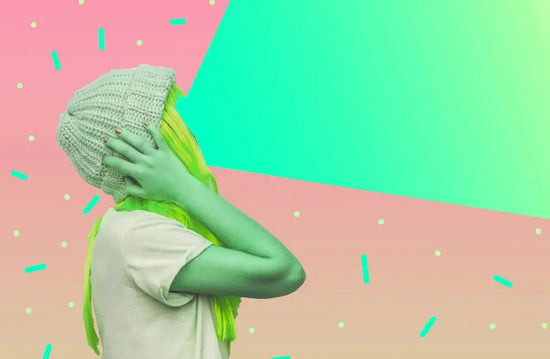
Describe a Day in the Life of a Blind Person
As Editor and Co-Founder of URevolution, I’m proud to introduce this compelling personal essay by Kathy Stephanides, who offers an unfiltered glimpse into the day in the life of a blind person. Too often, society makes assumptions about what blind people do all day or what it is like being blind. Kathy powerfully disrupts these stereotypes by choosing to describe a day in the life of a blind person from her own lived experience. Her story brings nuance, humanity, and visibility to the life of a blind person, reminding us why disability representation is a critical part of any meaningful conversation about diversity, equity, and inclusion.
This personal essay offers an honest and vivid account of a day in the life of a blind person, revealing the challenges and routines most people rarely consider.
By choosing to describe a day in the life of a blind person, the author shares practical insights about navigating daily tasks, technology, and social perceptions.
The story helps readers better understand what blind people do all day and what it is like being blind, breaking down assumptions about the life of a blind person with lived experience and authenticity.
What Is A Day In The Life Of A Blind Person Like?
Do you want to know what it is like being blind? What a day in the life of a blind person is like? I am blind and I will tell you what life with blindness is like.
This is my story about a typical day in the life of a blind person: me. I awaken slowly and touch the button on my talking clock, which recites the hour of 9AM, wiping away the deposits that the sandman left the night before.
I give some final hugs to my down pillow and comforter, stretch out my arms and legs as if I were ready to take flight, and then propel myself onto my feet. As is my usual, I rise with a great deal of hesitation. Never have I been a bounding out of bed morning person, in contrast to Ted, my husband. And being a blind person, jumping out of bed is not my way to start the day.
From feeling the warmth of my carpet under my feet, I stand and slowly walk over to the cold marble floor of my bathroom. I take my medications, brush my teeth, swipe a few hasty brushes through my hair, and wrap myself in my cozy teal-colored bathrobe.
What Do Blind People Do All Day? A Morning Routine Full of Purpose and Flavor
When I look in the mirror to make an assessment of myself, I only see a vague outline of my body, which is predictable and disappointing at the same time. My amorphous outline feels nebulous, undefined. Did you know that while only 18 percent of people with significant visual impairments are actually totally blind, most can at least perceive light.
One thing I particularly miss is not being able to see my blue eyes gazing back at me. Now I am ready to face the world, which currently involves Ted upstairs, reveling in his morning news read.
As is our tradition, we review our plans for the day – my plans, his plans, our joint plans – we agree to begin by making breakfast together.
Ted scans the refrigerator and finds a full bag of mushrooms that are nearing their use-by date, and hands them to me. I dump them into the colander, wash and drain them, destem them and slice them. Voila, the mushroom bowl overflows and is our key component for an egg scramble.
Did you know that blind people can safely use kitchen knives? It is just a matter of learning how to use the knife correctly.
Ted slices yellow onion, I whisk the eggs, and we add fresh spinach and Italian seasonings to the mix. Carefully, I stir things together, trying to avoid much spillage and enjoying the savory blend wafting through the air. We toast whole wheat bread, spread it with peanut butter, and sit down at the barstools to ravenously enjoy our meal.
A cook who becomes blind still has a lifetime of experience and knowledge about food a resource to be prized. There is no reason for a blind person to be frightened of hot stoves, electric mixers, sharp knives, or anything else in the kitchen.
A Day in the Life of a Blind Person: Finding Meaning (and Humor) in Everyday Chores
After the dishes are cleared away from breakfast, I move downstairs to fold a load of sheets and laundry.
A day in the life of a blind person, like that of a sighted person, still involves the routine of daily chores.
Believe it or not, doing laundry as a blind person provides me with a physical and sensual comfort through the folding, smoothing, and piling of all the items, each with their own texture.
As I am awkwardly joining the corners of the fitted sheet, and smoothing down vertically on the length of it, I suddenly feel a round, ball-like item near the bottom of the sheets.
“Hmmm,” I mutter, “what is this, and how do I remove it?” I struggle for five minutes before I can extricate the ball from between the folds. I discover that the prisoner is the eco-friendly softener ball that my daughter, Julia, has introduced to me recently to use in place of traditional dryer sheets. Later, I saw that this moment as a bit of comic relief for me in a usually mundane task.
Meeting friends for lunch is part of a typical day in the life of a blind person
A few hours later, we plan for our next activity. This involves meeting Mandy and Bill for lunch at Saul’s Jewish Deli and Restaurant in Berkeley — in our busy lives, we have planned this a month previously. Although Ted is more neutral about the meeting, I feel more charged and energized by our date since Mandy and I worked together for twenty years as nurses in a psych ward until 1999.
Although for many years Mandy represented a buried treasure, a friendship that grew distant due to changing workplaces and geographical separations, we have rekindled a fresh relationship. Now, since Mandy has moved to Berkeley, adjacent to Oakland, where I live, our contact resumes more easily.
After we settle on our orders at the restaurant, the conversation reaches a comfortable ebb and flow since we have not seen each other for a few months. Coloring my intrigue about Mandy and Bill, who have been married for thirty-five years, is the question of how they have survived major differences. While Mandy is a reformed Jewish woman, Bill is a devout Jehovah’s Witness.
It pains me to know that Mandy cannot be honored on her birthday, their anniversaries, and historically, not at her bat mitzvah in her forties, which I attended, but he did not, due to Bill’s belief restricting celebratory events. Facing these spiritual and philosophical differences daily in a marriage seems unimaginable to me. Perhaps, for Bill, suffering as a test of faith is not just a religious concept but a lived experience—one he navigates with deep conviction, even in matters of family and love.
However, as we saw at the lunch table, Bill presented a kind, thoughtful, and non-controlling demeanor to their life together. This was reassuring and reinforced that their mutual trust sets a strong foundation for their marriage. Since Ted and I live a more secular and areligious life, rekindling time with Mandy and Bill works better for us without Bill evangelizing his beliefs.
Our meaningful conversation flowed amongst us and ranged from our mutual health concerns, our children’s status (six between us), Mandy’s tender work at the Berkeley Animal Rescue Mission, and our past and future travel plans.I value being attentive to my friends as they share and learn some new truths about Bill and Mandy’s lives – one being that Bill’s two older sons were adopted and have returned to live with their birth father as adults.
Since Mandy needed to leave for her volunteer work at 2PM, we all agreed to leave by 1:30PM, and the teeming of hungry customers prompted us to do so. Outside, as we all hug goodbye, I mention that "we should text to get together in another three months.” To which Mandy adds, “Oh, no, I am really liking these get-togethers, let’s make it in the next one to two months.” Warmth fills my heart as I hear Mandy’s endearing sentiment (and yes, blind people can text and use mobile phones).
Human connectedness with friends is important part of the day in the life of a blind person (and for those that have sight). It gives me an increased feeling of belonging, happiness, and self-worth that would be much diminished without friends.
When describing a day in the life of blind person remember that even though we are blind, many of us continue to socialise and have friends just like most non-blind people.
Read more: How to ask someone about their health
What Is It Like Being Blind? Navigating Swim Routines with Humor, Adaptation, and Joy
As Ted drives us back to Oakland, we prepare for our four-time-weekly swimming activity. Before entering the waters, I do a quick-change act, donning my two-piece swimsuit and my bathing cap. As I was getting ready to get out of the dressing room, using my trusty white cane to guide me, something did not feel right about the top half of my swimsuit. A-ha, as I felt for my bra cups, I discovered that they were both in the back.
Rather than provide such a spectacle to the other club members, I quickly rotate the suit around so the cups are facing frontwards.
Our swimming is a two-step process. First, we immerse into the one-hundred-and four-degree jacuzzi and then, once warmed, proceed to the eighty-four-degree pool, hand in hand. The club has dedicated the far-hand right lane to me. They have installed a heavy-duty, coiled divider, which basically keeps me in my own lane rather than allowing me to be a wandering soul. I swim for forty-five minutes, albeit for me at a slow pace, using a combination of breaststroke and freestyle.
Since night has now fallen, the pool lights guide me as if they are beacons. As I swim, I imagine that I am a lost soul afloat looking for a lighthouse. Ted positions himself in the lane next to mine and functions as the timekeeper and occasional Spanish greeter, chiming, Hola, when we meet at the same end of the pool.
When we finish swimming, we step out of the pool, which is a painful process since cold air and wind often briefly chill me. Seventy-five feet away, however, the jacuzzi beckons me back into its embrace. The water creates a soothing bath and is a wonderful way to end my day.
So, a day in the life of a blind person, isn’t so different from yours.











